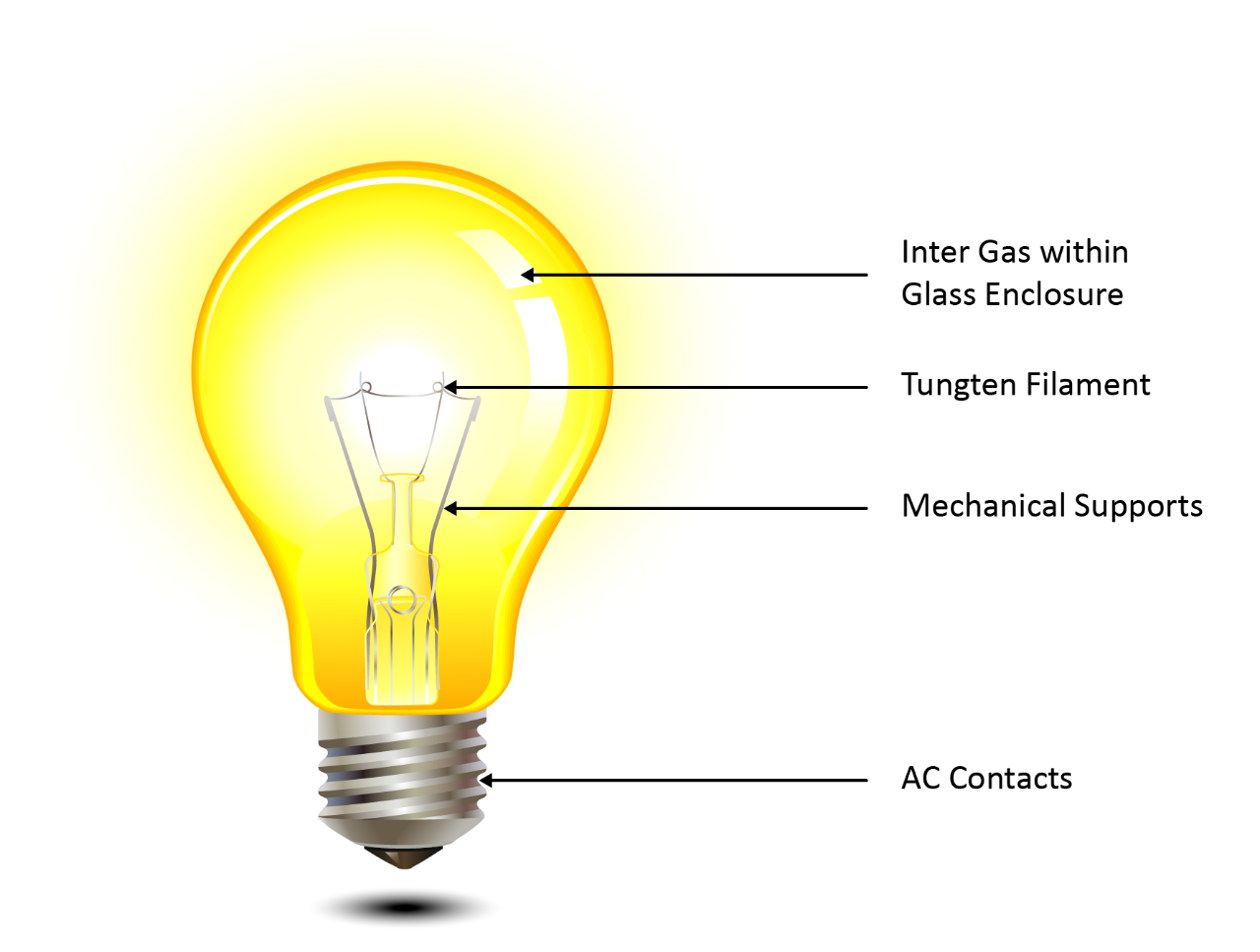Since Edison developed the first practical incandescent light bulbs in 1880, they have remained the primary source of illumination in a wide array of applications. As environmental concerns spark “Green” initiatives and new legislation is introduced in many countries around the world to demand reductions in energy consumption, the lighting industry is challenged to replace the incandescent light bulb with new and more efficient technologies.

Advantages
- Cheap
- Large amounts of visible light
- No electronics required
Disadvantages
- Poor efficiency
- ~10% input energy = light
- ~90% input energy = radiated heat
- 10-30 lumens/watt (efficacy)
- Short life: 1000–2000 hours
Variations
- Halogen, metal halide
Incandescent light sources are good at creating large amounts of visible light and even greater amounts of heat. As a result, a typical light bulb is not very efficient; approximately 10% of the input energy is output as light while the remaining 90% is wasted as radiated heat. The typical light bulb has a relatively short lifetime, ranging from several hundred to a couple thousand hours, due to the extreme heat of the tungsten filament causing it to evaporate and eventually fail.
Incandescent lighting efficiency can however be maximized via the creation of intelligent controls with capabilities such as timers, environmental sensing, wired/wireless communications and touch sensing.
Dimming Incandescent Lamps
- 8-bit Microcontrollers
- 16-bit Microcontrollers/Digital Signal Controllers
- Hybrid PWM Controllers
- Electroluminescent Backlight Products
Similar Devices
Similar Devices
Similar Devices
Similar Devices
Application Notes
|
Title
|
|
|---|---|
| Combining the CLC and NCO to Implement a High Resolution PWM | Download |
| Bit Banged LIN Slave Node for PIC16 & PIC18 | Download |
| High-Efficiency Solutions for Portable LED Lighting | Download |
| Dimming AC Incandescent Lamps Using A PIC10F200 | Download |
| Alternate Use of the HV9922 as an Off-line, Non-isolated, 50 to 100 mA Auxiliary Power Supply | Download |
| HV9910B: Constant, Off-time, Buck-based LED Driver | Download |
| Buck Configuration High-Power LED Driver | Download |
| Improving the Efficiency of a HV9930/AT9933 Boost-Buck Converter | Download |
| A Technique to Increase the Frequency Resolution of PICmicro MCU PWM Modules | Download |
| Dimming Power LEDs Using a SEPIC Converter and MCP1631 PIC Attach PWM Controller | Download |
| Compatibility and Functional Differences between the HV9961 and HV9910B LED Drivers | Download |
| Offline Power Converter for High-Brightness LEDs Using the PIC16HV785 Microcontroller | Download |
| Designing with HV Microcontrollers | Download |
| HV9910B: Buck-based LED Driver | Download |
| Designing a Boost-Switching Regulator with the MCP1650 | Download |
| Transformerless Power Supplies: Resistive and Capacitive | Download |
| Isolated Constant Power Converter Using the HV9922 | Download |
| DALI Control Gear | Download |
| A Digital Constant Current Power LED Driver | Download |
| Digitally Addressable Lighting Interface (DALI) Communication | Download |
| AT9933: Designing a Boost-Buck converter with the HV9930 | Download |
| Software PWM Generation for LED Dimming and RGB Color Applications | Download |
| Maximum Power Solar Converter | Download |